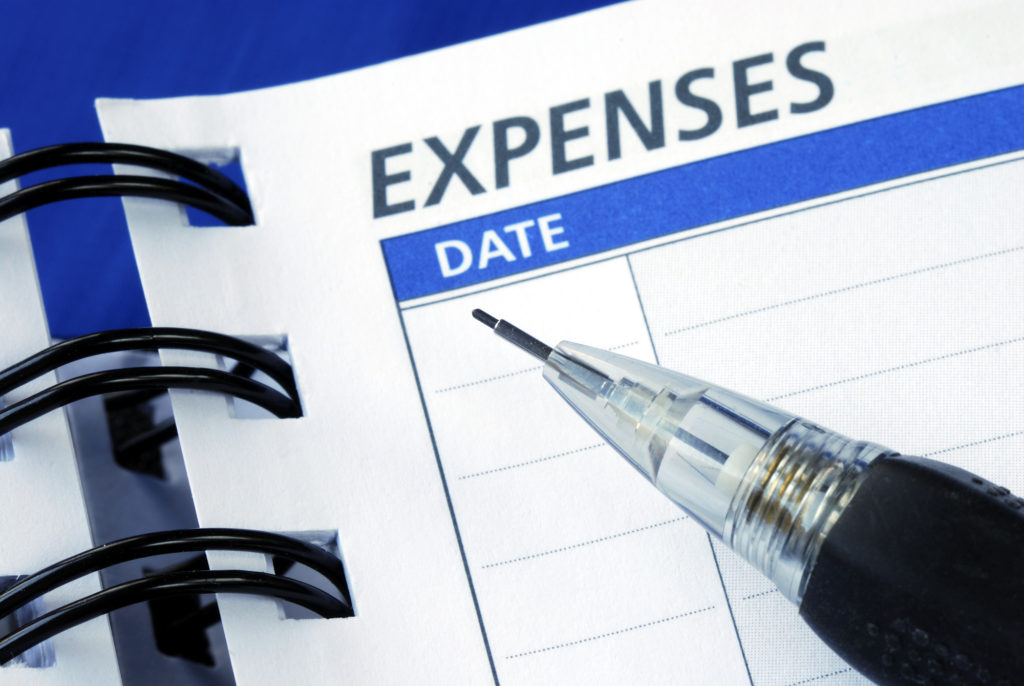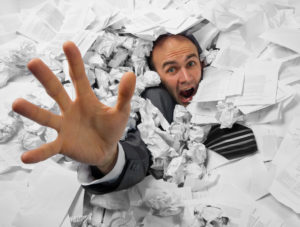What are Business Expense Categories?
Every purchase your business makes should be recorded as an expense. However, you can incur several different types of expenses, so you must keep them organized by expense categories.

Ordinary and necessary business expenses can be deducted from your taxable income. That means that the purchase has to play a role in operating your business. These could include expenses for office rent or the flight you took to Chicago for a business meeting.
With all of the different business expenses you incur each year, it can be difficult to organize them. That’s where tax categories come into play. In this guide, you’ll learn everything you need to know about:
- Expense Categories
- Common Expense Categories
- Categorizing Expenses
- Tax Deductible Business Expenses
- And More
What are Expense Categories?
With all of the different expenses businesses incur, it would take a long tax return to list each one individually. That’s why the IRS has created convenient expense categories. While a tv commercial is completely different from printed fliers, they achieve the same goal–advertising your company to consumers. For that reason, you would place all of your different advertising-related expenses in the advertisement expense category.
All of the accounting expenses categories make your life easier at tax time, and they help you stay organized all year long. However, you may not use all of them. You may find that one or even several tax categories aren’t relevant to your trade or business. If that is the case, you can simply ignore them. Keep reading to learn more about some of the other expense categories you may be able to deduct.
What are the Categories for Business Expenses?
In addition to advertising expenses, the IRS defines several other ordinary and necessary business tax categories. It’s important that you know about all of the business expense categories related to your business. Otherwise, you could miss out on valuable business tax deductions! Our list of business expense categories for small-business owners can help you get started.
Payroll
Unless you are self-employed, your small business has to pay for employees. These expenses, whether wages or salaries, are all part of your payroll expenses. It is likely that paying employees is one of the biggest types of business expenses you have. Fortunately, those payments are deductible business expenses.
Keeping track of your payroll expenses also help you manage your company. You might find areas you can afford to expand, or you may find that some departments need reducing. Either way, categorizing all of your payroll costs helps you develop strategies for the future.
Rent
Unless you have a home office, you probably pay rent for your business space. The good news is that your monthly payment is tax-deductible. Therefore, you need to keep track of how much you spend on renting or leasing your business location.
Don’t worry–if you work from home, you can qualify for a home office deduction instead. The simplified tax-deductible amount equals $5 per square foot up to 300 feet. The room must be regularly and exclusively use for business. Your living room is not considered a home office.
If you own your place of business, you need to keep track of expenses related to that as well. Whether you’re making a monthly mortgage payment or paying property tax, these expenses all matter.
Utilities and Phone
Along with your rent, the cost of your electricity, water, internet, and cell phone all count as business expenses. Instead of creating business expense categories for different utilities, you can place them in one. Depending on your business, you may have more or fewer utility expenses. Home office workers should also be aware that some utility deductions apply to their business as well.
Office Supplies
Whether you bought a single pen or more staples, all of your supplies belong in one category. To be considered an office supply, it must be a physical item. The IRS has additional business expense categories for things like accounting software.
Office Expenses
The IRS considers new computers, software, and equipment office expenses. These tax-deductible expenses come from items that help run your small business. Keep in mind: some big-ticket items may require you to depreciate them over time.
Travel Expenses
Business travel has its own category as well. Whether you reimburse employees or issue a company credit card for travel, you need to record the transactions. As long as the travel is for your business, you can deduct the expense. Common travel expenses include:
- Plane Tickets
- Lodging
- Baggage Fees
- Rental Cars
- Meals
It’s important to note that that there are limitations on your meals. You can only deduct up to 50% if it is directly related to business. For example, a dinner discussing business with a future client can be added to the travel expenses. Buying a pizza after the conference ends doesn’t count.
Professional Services
Many self-employed people may find themselves needing help from an independent contractor. You could hire someone to build your website, or you could hire a lawyer to write up a contract. No matter the reason for hiring an outside contractor, you can categorize the expense under professional services.
Since these individuals are not considered employees, their payments do not fall under the payroll category. However, sometimes, this can be a gray area for a small business. If you issue them a 1099 instead of a W-2, then place their expenses under this category.
Vehicle Expenses
As a small business, you might find that you need to use your personal vehicle for business. In this case, you can deduct some of your vehicle expenses. Tracking your mileage and keeping fuel receipts help you to calculate these expenses. Those aren’t the only vehicle expenses to consider.
If your trade or business requires you to manage a fleet of vehicles, you can expect many more expenses. Everything from oil changes to tire rotations count towards your deductible business expenses. These vehicles must be strictly for business use, however.
How to Categorize Expenses
Categorizing a business expense is much easier than it seems. Don’t overthink it! Instead, follow these three easy steps:
- Determine the Right Categories: As we mentioned before, each trade or business has its own specific tax deductions. You must determine the types of business expenses that most often in your work.
- Review Expenses: Whether you’re looking at a credit card statement or receipt, you need to carefully review the expense. Think about the specific item you purchased and the role it plays in your business.
- Assign the Transaction to a Category: Once you know more about the expense and different categories, you can match the transaction.
Accounting Software
While you can certainly organize your business expense categories by hand, other options exist. You can save yourself a lot of time by using automated accounting software. Not only does it speed up the entry process, but it also reduces the chances of error. Today’s technology can efficiently categorize every business expense with exceptional accuracy. You never have to worry about missing out on tax deductions again!
Maximizing Tax return with Deductible Business Expenses
The IRS does not base the amount of taxes you owe off of your total business income. Instead, they allow you to reduce your taxable income by subtracting business expenses. This is known as a tax deduction. You cannot deduct any expenses that aren’t ordinary and necessary for running your business.
How do you figure out your tax-deductible business expenses?
By adding up all of the transactions under all of the typical expense categories. You can then input these numbers into your tax form and follow the directions. Once you deduct the cost of operating your business, you are left with your taxable income.
It’s important that you accurately add up every business expense. Underestimating your business expenses could make a huge difference when you pay your taxes. If you left out one large expense or many small expenses, you could pay more taxes than needed. In fact, a miscalculation could put you in a different tax bracket altogether, which would raise your taxes.
How Wellybox Can Help Categorize Business Expenses
If you want to make sure that you maximize your tax return, let Wellybox help. You won’t have to worry about missing business expenses when you utilize our software. With a Wellybox subscription, you can scan all of your emails to look for invoices, receipts, and other records.
From there, Wellybox collects all of the critical data, and you can save it to your preferred cloud storage. You can also integrate your account with accounting software like QuickBooks. This feature allows you to put all of your transactions into the proper business expense categories.
Sign Up for WellyBox Business Expense Tracking
Not sure if Wellybox is a good fit for your small business? No problem. You can sign up for a free trial to test it out! We also offer premium accounts with more benefits and features starting at just $5.99 per month. Not only is that an incredibly low price, but it’s also a tax-deductible business expense! What do you have to lose? Sign up today!
Don’t forget to share






